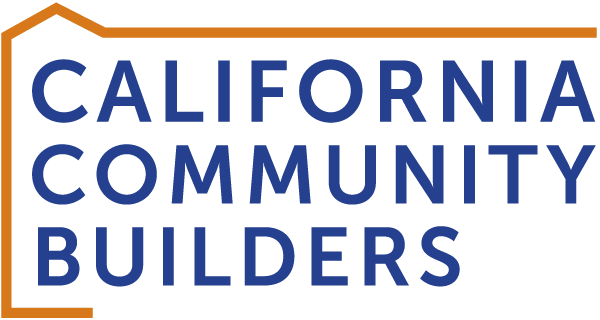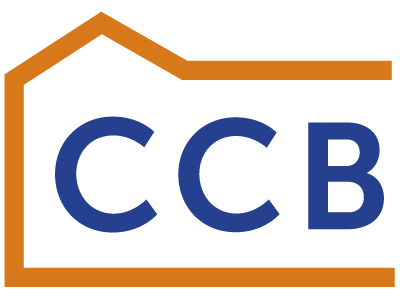A path forward to address California’s triple-crisis: housing, climate, and wealth inequality
By Adam Briones and Alex Schafran, Ph.D.
California Community Builders was founded to close the racial wealth gap. As we wrote in a recent post about our perspective on homeownership, we see homeownership as an “imperfect but incredibly valuable” tool in reducing racialized wealth inequality. We take a practical approach, which means taking a look at how we maximize the benefits – and minimize the risks – of homeownership for families of color.
Beginning this year, CCB has identified multifamily homeownership (MHO) as a strategic priority for our organization, in terms of our research, advocacy, and organizational infrastructure.
While MHO may sound like a dry, academic term, it simply means what is says: two or more families owning a portion of the same residential structure. This could mean a unit in a condo, a share in a co-op, or some portion of a traditional single-family home co-owned with a sibling or a friend. Multifamily homeownership comes in many shapes and sizes, from tall buildings with hundreds of units to a simple duplex. Some multifamily homeownership units are market-rate, while others have deed restrictions or subsidies to make them affordable. MHO includes all the informal arrangements that friends and families have come up with to share houses and property, and innovative ways of living together affordably through arrangements like community land trusts.
Multifamily homeownership describes an incredibly diverse set of housing arrangements, fitting for a state as diverse as California. If there is anything we have learned in our years advocating for quality homeownership, it is that one size never fits all here in the Golden State.
MHO is important – important enough that we will soon be publishing a major report about it: “Pathways to Addressing the California Housing Crisis: Multifamily Homeownership.”
Why is it important? First, because it’s how many millions of Americans actually live. California has 1.26 million condo units, and many other Californians live in tenancies-in-common, community land trusts, and all sorts of informal arrangements. MHO is more prevalent in communities of color: National figures from 2021 indicate that Black, Asian and Latinx homeowners were more likely than whites to own in multifamily structures. A racial justice view of homeownership needs to consider this form of housing.
Critically, MHO units tend to be less expensive than single-family houses. In a state where the price of homes has locked millions of working families out of any possibility of becoming a homeowner, the affordability of MHO can help open doors that right now are locked shut.
And MHO can help California meet its climate goals and promote better land use. Multifamily structures can help us create more walkable, bikeable, transit-friendly communities and reduce sprawl, traffic and pollution.
But, as our upcoming report will lay out in detail, MHO faces serious challenges. For one thing, it’s understudied, under-discussed and under-appreciated. We literally do not have the data to fully understand this important part of the housing landscape, including both the opportunities and challenges that this sector faces. We have very few dedicated studies of multifamily homeownership, few organizations dedicated to supporting it, and an industry that struggles to build it. What we don’t know not only can hurt us, it is hurting us.
The MHO field faces an array of other issues, including difficulties with mortgages and financing, as well as the logistical and personal challenges of running a building with your neighbors. These challenges can be addressed, but only if we give them the attention and effort they need.
Right now, those challenges, and many others our report will lay out, prevent California and the nation from taking advantage of the opportunities that MHO can provide. The potential for this type of housing to reduce housing scarcity, improve affordability and help give working families – disproportionately families of color – a better shot at building wealth and reducing the racial wealth gap remains largely unrealized.
To be clear, we do not see MHO as some sort of magical solution to California’s housing problems. The size, scale, and depth of our intertwined housing crisis, climate crisis, and wealth inequality crisis mean there is simply no magic bullet that can solve political and economic problems that have been in the making for the past 100 years. MHO is not for everyone, and paying attention to MHO doesn’t mean ignoring either renters or those who prefer to own single-family homes.
Yet if done right, an effective MHO structure offers California an opportunity to maximize benefits for hard working families in the housing economy we have today, not the one we hope will exist someday. CCB believes that the opportunities far outshine the challenges when it comes to MHO, and that California is up to the task of building a 21st century housing economy that matches the diversity of its population.
Through our upcoming report and our future research and advocacy work, CCB will be studying multifamily homeownership in all its forms as part of an effort to answer a simple question: What can the public, private and nonprofit sectors do to grow and strengthen homeownership opportunities in California?
We invite you to join us on this journey.
* * * *
- WEBINAR -
Multifamily Homeownership: Pathways to Addressing the California Housing Crisis
Wednesday, May 31st, 2023 | 10:00am - 11:00am PST
ADAM BRIONES
CEO California Community Builders
ALEX SCHAFRAN, PHD
Owner, Schafran Strategies
Multifamily homeownership — condos, co-ops, community land trusts, intergenerational housing, and more — gets relatively little attention in housing policy circles, which means the role it can play in addressing California's housing crisis has been largely ignored. If multifamily homeownership were better supported by policy and industry, it could provide more affordable and flexible paths to homeownership, and thus play a critical role in closing the racial wealth gap.
In this webinar, California Community Builders CEO Adam Briones and researcher Alex Schafran will look at multifamily homeownership and highlights from CCB's new report on the issue, including both the challenges and opportunities that this type of housing presents in a state where homeownership has become unaffordable for too many families.




